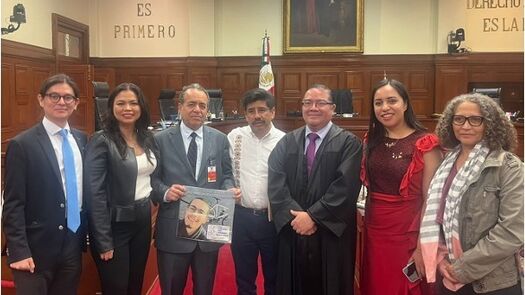November 25, 2025
On January 8, 2025, the Government of West Bengal took a landmark step in advancing road safety by officially issuing new safe speed limits across the state based on road type, traffic conditions and proven impact of speed on crash severity. This progressive move addresses a growing public health and safety concern: the rise in road crashes and fatalities in the state, where improved roads inadvertently led to increased speeds and heightened risk. By implementing context-specific speed limits with separate guidelines for urban and rural (non-urban areas)- West Bengal aims to bring speeds in line with what’s safe for each setting. One noteworthy change is the 50 km/hr maximum speed limit in urban areas.

In recent years, West Bengal experienced a surge in road traffic injuries and fatalities, often linked to speeding. With infrastructure improving, vehicle speeds increased without the appropriate speed control measures. The lack of contextual, enforceable speed limits had become a critical road safety issue leading to nearly 6,000 lives lost per year.
The Policy Achievement and Its Champions
The state government, with support from Indian Institute of Technology, Kharagpur and the Global Road Safety Partnership (GRSP), introduced speed limits that are tailored to specific road types, human injury tolerance levels and surrounding environments. The new speed limits include:
- Urban roads: Maximum speed capped at 50 km/h.
- Market and residential areas: Speed limit set at 30 km/h.
- School zones: Strict limit of 25 km/h.
- Public buses: Restricted to 20 km/h
This comprehensive policy aligns with global best practices and emphasizes reducing the risk of death and serious injury, particularly for vulnerable road users such as pedestrians and cyclists.
Kolkata has become the first city in India to officially adopt a scientific safe speed framework for different road categories, with a clearly defined cap of 50 km/hr for urban roads. This move sets a national precedent for evidence-based urban traffic regulation. IIT Kharagpur strengthened the evidence base and fortified the development of the scientific speed management policy. The project was strengthened through technical guidance and global best practices provided by Global Health Advocacy Incubator (GHAI) and GRSP. The government of West Bengal, under the leadership of the Transport Minister Snehasis Chakraborty, was the the key facilitator in adopting and notifying the policy. The notification was officially issued by the Chief Secretary of West Bengal, giving it state-wide enforceability. To support implementation, the West Bengal Traffic Police have begun enforcing the new speed limits, including the installation of speed cameras at 30 high-risk locations across the state.
Implementation and Impact

This policy achievement is not just a paper reform. West Bengal has already begun implementing it:
- Kolkata’s Eastern Metropolitan Bypass is being transformed into a safe corridor, combining a plan for speed management, road engineering, emergency response and community awareness.
- Crash data analysis has identified 18 high-risk hotspots, using spatial clustering to guide intervention.
- Kolkata police have officially notified road-specific speed limits in alignment with the state policy.
- In a first for the state, 30 speed cameras have been installed on non-urban roads outside Kolkata by West Bengal Traffic Police, marking a significant milestone in policy enforcement. While Kolkata already had speed cameras in place, these new installations beyond city limits are a direct result of the recently notified speed management policy and sustained engagement efforts.
The expected impact of the new speed management policy is significant. It is anticipated to lead to a reduction in fatalities and injuries from road crashes, while also contributing to lower fuel consumption and emissions, supporting broader environmental goals. Additionally, the policy is expected to deliver important health and social benefits, including reduced noise pollution and increased safety for all road users—particularly children and the elderly.
Building on this momentum, the next phase of work will be on the continued transformation of high-speed corridors into Safe System Approach-based roads. Field audits with stakeholders are underway to monitor adherence to the new speed limits and identify areas for improvements. At the same time road safety champions will aim to replicate this model in other states and influence broader national road safety strategies. Ongoing technical support and evaluation will be crucial to ensure the long-term sustainability and effectiveness of the policy.
This marks a proud moment for road safety in India, with West Bengal as a leading example of how science-backed policy, cross-sector collaboration and committed public engagement can work together to make streets safer for everyone.


